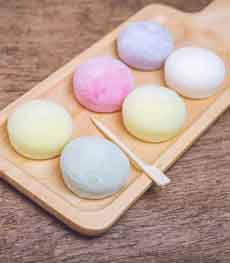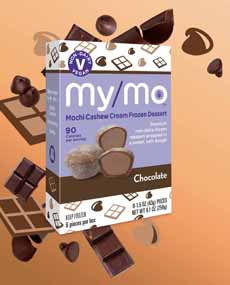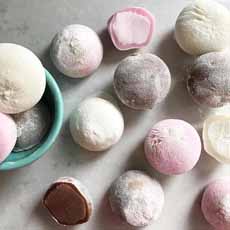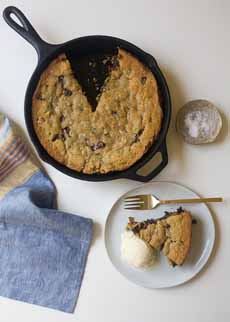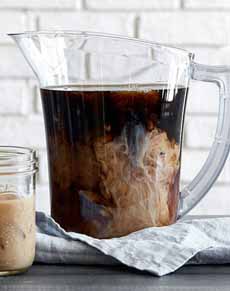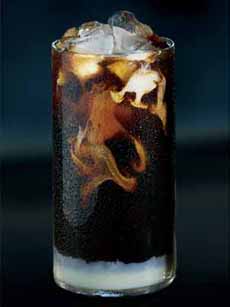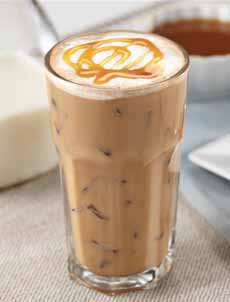|
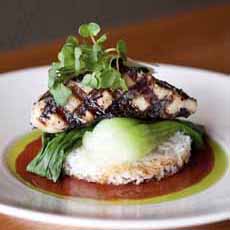
[1] Sablefish on a bed of rice, with baby bok choy, garnished with microgreens. At Ray’s Boathouse in Seattle.

[2] Sablefish on rice with crisped kalettes at Bamboo Sushi in Portland, Oregon.
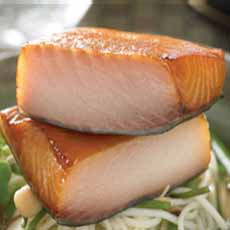
[3] Sauteed sablefish atop a bowl of greens (photo courtesy Vital Choice).

[4] Smoked sablefish from Russ & Daughters in New York City.
|
|
Have you had sablefish? What about black cod? Alaska cod? Butterfish?
Many fans of black cod or Alaska cod (and other names) don’t know that it isn’t cod. It’s sablefish (Anoplopoma fimbria), a member of a completely separate fish family (the cod family is Gadidae).
Sablefish belong to the Anoplopomatidae family, a group of deepwater fish which are only found in the North Pacific, from the U.S. west to Japan.
So why call it black cod? It’s marketing: Make it sound more mouth-watering and the fishing industry will sell more of it. The same was done with:
Mud crabs, sold as peekytoe crab
Goosefish, sold as monkfish
Patagonian Toothfish, sold as Chilean sea bass
Slimehead, sold as orange roughy
Renamed, they quickly developed a market and now sell at premium prices. Under their original names, would you buy them? (“What’s for dinner tonight?” “Slimehead and mud crabs.”)
WHAT DOES IT TASTE LIKE?
A premium-quality whitefish, domestic sablefish come largely from the Gulf Of Alaska, which boasts the world’s largest sablefish population. The Bering Sea, on the other side of the Alaska peninsula, is another great fishing ground.
In addition to delicious fish, you’ll get high-quality protein plus all your omega 3’s*, and lots of minerals: calcium, copper, iron, iodine, magnesium, phosphorus and zinc.
The white flesh has a soft textured and mild, buttery, sweet flavor. When cooked, its flaky texture is similar to Chilean sea bass (i.e., Patagonian toothfish).
And surprise: Chilean sea bass isn’t even a type of bass: It’s a member of the cod family!
HOW TO SERVE SABLEFISH
Most of the sablefish consumed in the U.S. is smoked, a technique used for centuries (more likely, millennia) by the indigenous tribes of the Pacific Northwest.
Rich in oil, they are exceptionally flavorful no matter how they are prepared. (For cholesterol counters: The fats in sablefish are highly polyunsaturated and well-suited to low-cholesterol diets.)
As you can see from the photos, fresh or frozen catch can be cooked like conventional fillets.
It can be baked, broiled (photo #2), grilled (using a grill basket—photo #1), pan-fried/sautéed† (photo #3) or poached.
Whole fish or large fillets can be roasted with the skin on.
Because of its oil content, it stays moist when barbecuing or smoking.
However, just because it’s called black cod doesn’t mean it’s suitable for most codfish recipes. Cod is a particularly dense fish.
Next time you see “black cod” or “sablefish” at the fish counter, don’t hesitate to give it a try.
|
And if you see smoked sablefish (photo #4), buy yourself a slice or two. In Jewish delis, it is called, simply, sable.
Like smoked salmon, it’s delicious with a bagel and cream cheese.
________________
*Because it lives in deep, icy waters, sablefish accumulates far more omega-3 fatty acids than most other white fish.
†The difference between a sauté and a pan fry is that for a sauté, the food is cut into small pieces, e.g. diced chicken. In a pan fry, it is left in larger pieces, like a breast of chicken or a fillet of fish.
|
